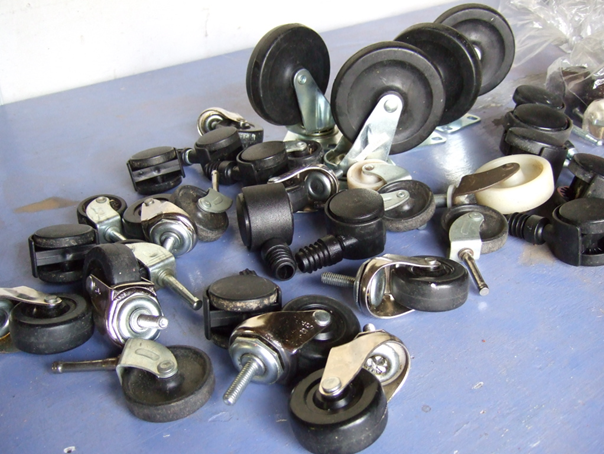How To Increase The Mobility Of Heavy Items

When you need to move a heavy item from point A to point B, you’d better get your muscles ready for some serious lifting. Just don’t throw out your back in the process!
If you’d prefer to give your arms and back a break, consider a smart alternative. Casters mounted to the bottom of your heavy items can simplify the process of moving them from one place to another. It’s a much less backbreaking method of transporting items.
What Are Casters?
When you need to move furniture or equipment from one place to another, a caster can help. This is a type of wheel, and it allows items to roll easily.
Unlike wheels that mount directly to the sides of an item, a caster includes two parts. There’s the wheel itself, and there’s also a horn assembly. The horn, sometimes known as the fork, is the piece that attaches the wheel to the item on which it is mounted. The wheel rotates through the horn.
There are two main types of horns. Rigid horns always point the same direction; they allow an item to roll forward or backward but turning requires greater maneuvering. Swivel horns have a component that allows the wheel portion to rotate a full 360 degrees, allowing for easy movement in many directions.
Common Caster Applications
Casters on various types of material handling equipment are common. For example, medical carts and hospital beds frequently have them. You may spot them in your garage on large tool chests or on dollies meant for hauling heavy loads. Even desk chairs may come with these wheels.
Casters are often employed in industrial and business settings. You’ll see them hard at work in factories, warehouses, hospitals, restaurants, office buildings and more. You can also use them to simplify life at home.
There are few limits to what types of items can be equipped with these wheels. Just because an item doesn’t originally come with these handy devices doesn’t mean that they can’t be added. You can affix a set to nearly anything.
For example, if you have a favorite tool chest, but you wish it were mobile, there’s no need to replace it with a different setup. Instead, you can add wheels to the bottom of the chest you already have. Not only is this a more economical solution, but it also allows you to keep using your favorite items without sacrificing mobility and usefulness.
Other places to mount a caster can include:
- Storage bins
- Beds
- Shelving units
- Cleaning carts
- Workbenches
Features to Look for in a Caster
When exploring the possibility of working with a caster, the first thing to consider is whether your project would benefit from a rigid or swivel one. In general, swivel horns offer you more flexibility. However, there are some applications in which greater freedom of movement is not what you need.
For example, if you want to be able to easily slide a desk chair from any point in the room to another, you’re probably going to want the easy maneuverability that swivel horns provide. Swivel horns are also useful for applications in which you’ll need to make tight turns. On the other hand, if you have a workbench that you want to be able to pull 12 inches straight out from the wall and then push it back into the exact same spot, rigid horns are best.
Debating the merits of rigid versus swivel horns isn’t the only decision to consider when shopping for a caster. You should also think about:
- Materials
- Metal wheels are durable, but rubber wheels can protect the floor underneath. Stainless steel wheels can be used at high temperatures. Plastic ones reduce noise.
- Weight limits
- Before you undertake a DIY caster project, double-check the weight of your item to ensure that you’re buying units with the proper rating.
- Size
- Larger wheels are useful over rough surfaces. They’re often recommended outdoors.
Additionally, you may want to look for special features like:
- Brakes
- These lock into place to keep an item from rolling at the wrong time.
- Locks
- This feature keeps swivel horns from rotating at inconvenient times.
- Thread guards
- A caster with this feature may not get jammed with foreign materials as frequently.
- Grease seals
- This protection helps to keep the bearings in good shape.
How a Caster Can Benefit You
Mounting horns and wheels on everyday items can simplify the chore of moving heavy loads from one place to another. With these devices in place, you’ll find it easier to clean behind furniture, rearrange a room or set up your workspace how it’s best for your current project. Where will you add a caster first?